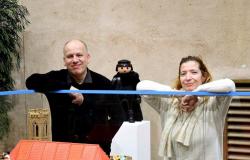
By proposing to eliminate the offense of apologizing for terrorism, La France insoumise attracted numerous condemnations on the political spectrum, on the right and among the Macronists, but also a strong response from the PS, with the question in the background anti-Semitism and the conflict in the Middle East.
LFI deputies tabled a bill aimed at repealing the offense of glorifying terrorism from the penal code, which according to them has accentuated “the instrumentalization of the fight against terrorism” against “freedom of expression”.
The text, tabled by the deputy of the North Ugo Bernalicis, wants to remove this offense created by a law of 2014, considering that in this matter “the law of July 29, 1881 dealing with facts relating to the offenses of apology for crime, “apology for war crimes, apology for crimes against humanity”.
The convictions were added up on Saturday among the Macronists and on the right, the Minister (LR) of the Interior Bruno Retailleau judging it “difficult to do more despicable”.
Faced with criticism, Insoumis leader Jean-Luc Mélenchon denounced “a new attack against LFI coming from the extreme right and slavishly taken up by the media-political officialdom”. “Rather than making films, read the text of the bill,” he said.
But the controversy also broke out on the left, with a scathing response from the first secretary of the Socialist Party Olivier Faure, also returning to the criticisms of Mr. Mélenchon against the German socialist chancellor Olaf Scholz on his position towards the decision of the International Criminal Court to towards Israeli Prime Minister Benjamin Netanyahu.
“I regret the German position which is not mine, but at the same time I am not submitting (a text) which purely and simply repeals the offense of advocating terrorism, the definition of which only requires clarification to avoid it abuses. It is imperative to protect public freedoms but also to protect the French from fanaticism and calls for violence and hatred”, writes on X Olivier Faure.
The socialists avoid “marginalizing the defense of the Palestinians by not succumbing to provocations and by refusing to consider anti-Semitism as 'residual'”, squeaks the PS boss again, using a term used by Jean-Luc Mélenchon. And to accuse LFI of “dividing” the “peace camp” and of seeking to “electorally exploit the tragedy”.
“Politicians, associations, journalists, trade unionists”
In their bill, the Insoumis ask “what democracy can still retain its name, when anti-terrorism methods are used to repress political activists, community activists, journalists or even trade unionists”.
They cite the case of CGT leader of the North Jean-Paul Delescaut, sentenced to a one-year suspended prison sentence at first instance – he appealed – for “apology of terrorism” via comments made in a leaflet supporting the Palestinians .
The LFI MP also mentions his group president, Mathilde Panot, and LFI MEP Rima Hassan, interviewed in April by the Parisian judicial police as part of investigations for “apology of terrorism”.
Ms. Panot was heard about the press release published by her group on October 7, 2023, in which the Hamas attack in Israel was described as “an armed offensive by Palestinian forces” in a “context of intensification of the policy of “Israeli occupation” of Palestinian territories.
In a letter addressed to his socialist, environmentalist and communist counterparts, Gabriel Attal, president of the Macronist EPR group in the Assembly, calls on the rest of the left to “clearly dissociate” themselves from LFI.
“I remember that it was the Republican left which proposed and voted on in 2014 this text which protected the security of the French and therefore preserved their freedom. In the middle of the trial of the assassination of Samuel Paty, the bill of the France insoumise is an insult and an indelible stain on those who wear it,” writes Mr. Attal.
“It is an insult to the memory of the victims of all the attacks which have bloodied France. Faced with terrorism, the Republic must remain firm and united”, for its part estimated the Representative Council of Jewish Institutions of France (Crif) , which is holding its annual convention on Sunday.
■





